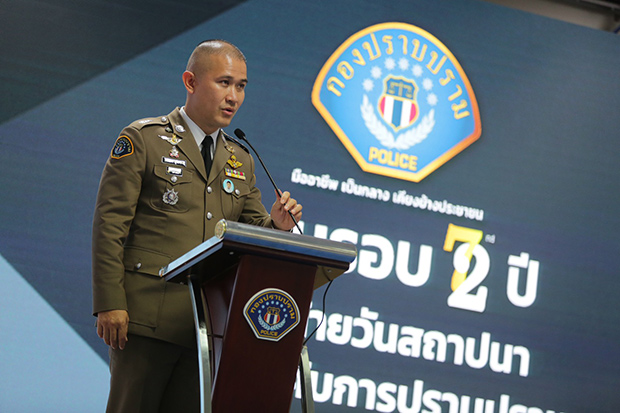
The Crime Suppression Division (CSD) is building solid foundations for digitising anything from in-depth investigations to engaging with the new generation of information technology users.
CSD commander Jirabhop Bhuridej acknowledges his division needs to be on top of the digital revolution to make it efficient and relevant to people in the 21st century.
The transformation will be his legacy now he has been promoted to deputy commissioner of the Central Investigation Bureau, a job he will take up in October.
Pol Maj Gen Jirabhop said a key principle of the job was to connect the CSD with the global network of crime fighters, which necessitated being fully digitised.
The only question was where digital technology should fit into the CSD's work.
The areas it is most focused on comprise social media, communication platforms, surveillance cameras, biometric records and even unmanned aerial systems and drones.
"These are sweeping changes for the police," said Pol Maj Gen Jirabhop, who will be replaced as CSD chief by the force's anti-corruption division.
The commander said digital technology marked a crucial turning point for the police and would transform the way officers enforced the law.
He noted that more people preferred to receive information and interact online and that social media and the internet generally were where digital crimes and fraudulent activity were thriving so police needed to be a step ahead of them.
Crooks, meanwhile, were using digital technology to monitor police activities, said the commander, so that was where officers needed to hone their online skills if they hoped to infiltrate the criminal world and suppress their activities swiftly and efficiently.
''Officers must learn to adapt to the world of social media and gain access to online platforms,'' said Pol Maj Gen Jirabhop. First, they must make themselves truly "mobile" and work anywhere they are needed so they could make the best decisions.
Pol Maj Gen Jirabhop explained that digital policing, which is being implemented along the practical guidelines he introduced two years ago, is the biggest step of all ... changing the force's deeply entrenched organisational culture.
The CSD celebrated its 72nd anniversary on Sept 1 and the commander felt it was high time the organisation shaped up. Officers cannot stay offline forever and must continue to deliver their jobs with the same degree of professionalism and efficiency in the new world, the commander said.
Pol Maj Gen Jirabhop did, however, recognise that the need to fully modernise and embrace the digital world must be balanced with the need to maintain people's data privacy.
He said the key was to create a fully mobile workforce. Equipped with their smartphones, the best officers would be able to fetch crime-related information with a click of a button. Crime scene evidence could also be captured on phone cameras and stored in digital files for easy and prompt retrieval.
The CSD chief added that digital engagement and digital contact management widened online channels of communication. People use these channels to quickly alert police and give tip-offs about crimes online and investigators can gather clues about criminals on social media.
Pol Maj Gen Jirabhop also said detectives had been trained to adopt proactive methods of preventing crimes -- in the past two months, officers had managed to use data they analysed to seize caches of illegal firearms in a number of provinces.
Proactive policing forms part of wider digital investigations which rely on the networking of social media influencers. One case in point is the mass shooting at the Terminal 21 shopping mall in Nakhon Ratchasima on Feb 8, which left eight people dead.
More casualties would have resulted if the police had not worked with at least four popular web pages in passing information via phones to people trapped in the mall during the shooting, leading to the rescue of more than 100 people.
The CSD also collaborates with the Department of Mental Health and social media influencers in helping with those with suicidal tendencies.
Two months ago, the division opened a channel on the popular TikTok app to engage with the young people from "Gen Z" and it now has more than 150,000 followers.
In terms of devices, the facial recognition system and the Machine Learning for Serious Crime Investigation (MSCI) have also been obtained by the CSD to streamline its investigation, Pol Maj Gen Jirabhop said.